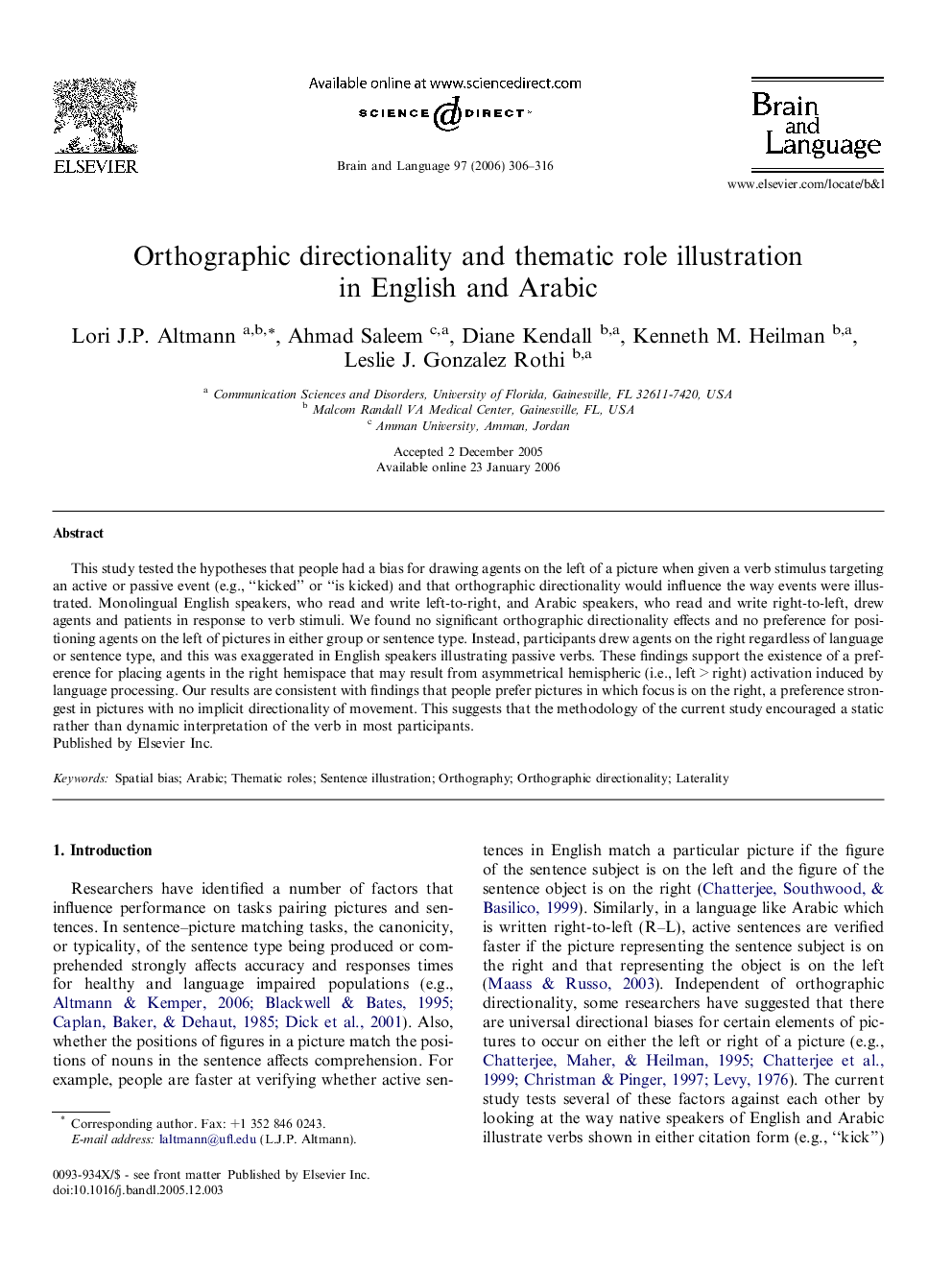| کد مقاله | کد نشریه | سال انتشار | مقاله انگلیسی | نسخه تمام متن |
|---|---|---|---|---|
| 926287 | 921571 | 2006 | 11 صفحه PDF | دانلود رایگان |

This study tested the hypotheses that people had a bias for drawing agents on the left of a picture when given a verb stimulus targeting an active or passive event (e.g., “kicked” or “is kicked) and that orthographic directionality would influence the way events were illustrated. Monolingual English speakers, who read and write left-to-right, and Arabic speakers, who read and write right-to-left, drew agents and patients in response to verb stimuli. We found no significant orthographic directionality effects and no preference for positioning agents on the left of pictures in either group or sentence type. Instead, participants drew agents on the right regardless of language or sentence type, and this was exaggerated in English speakers illustrating passive verbs. These findings support the existence of a preference for placing agents in the right hemispace that may result from asymmetrical hemispheric (i.e., left > right) activation induced by language processing. Our results are consistent with findings that people prefer pictures in which focus is on the right, a preference strongest in pictures with no implicit directionality of movement. This suggests that the methodology of the current study encouraged a static rather than dynamic interpretation of the verb in most participants.
Journal: Brain and Language - Volume 97, Issue 3, June 2006, Pages 306–316